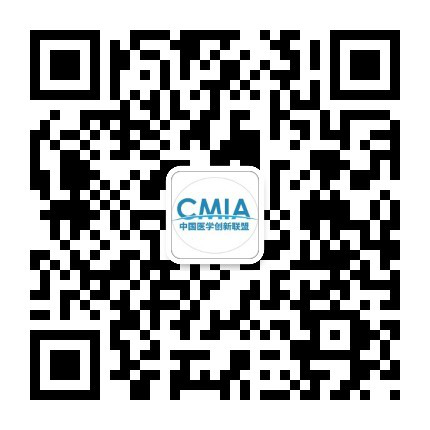一种新的放射基因组学生物标志物,用于预测非小细胞肺癌中程序性细胞死亡-1通路抑制的治疗反应和肺毒性
SCI
19 February 2023
A Novel Radiogenomics Biomarker for Predicting Treatment Response and Pneumotoxicity from Programmed Cell Death-1 Pathway Inhibition in Non-Small Cell Lung Cancer
(Journal of thoracic oncology, IF: 20.121)
Chen M, Lu H, Copley SJ, Han Y, Logan A, Viola P, Cortellini A, Pinato DJ, Power D, Aboagye EO. A Novel Radiogenomics Biomarker for Predicting Treatment Response and Pneumotoxicity from Programmed Cell Death-1 Pathway Inhibition in Non-Small Cell Lung Cancer. J Thorac Oncol. 2023 Feb 9:S1556-0864(23)00096-5. doi: 10.1016/j.jtho.2023.01.089. Epub ahead of print. PMID: 36773776.
Corresponding author. Cancer Imaging Cancer, Department of Surgery and Cancer, Room GN1 Commonwealth Building, Du Cane Road, Hammersmith Campus, Imperial College, London, UK, W120NN
eric.aboagye@imperial.ac.uk, Tel: +44 (0) 208 383 3759 Fax: +44 (0) 208 383 1783
Introduction 简介
Patient selection for checkpoint inhibitor immunotherapy is currently guided by programmed cell death ligand 1 (PD-L1) expression obtained from immunohistochemical (IHC) staining of tumour tissue samples. This approach is susceptible to limitations resulting from the dynamic and heterogeneous nature of cancer cells, and the invasiveness of the tissue sampling procedure itself. To address these challenges, we developed a novel CT radiomic-based signature for predicting disease response in patients with non-small cell lung cancer (NSCLC) undergoing programmed cell death protein-1 (PD-1) or PD-L1 checkpoint inhibitor immunotherapy.
检查点抑制剂免疫治疗的患者选择目前由程序性细胞死亡配体1(PD-L1)表达指导,该表达来自肿瘤组织样本的免疫组化(IHC)染色。这种方法容易受到癌细胞动态和异质性引起的限制,以及组织取样程序本身侵入性的影响。为了应对这些挑战,我们开发了一种新的基于CT放射学的标记,用于预测接受程序性细胞死亡蛋白-1(PD-1)或PD-L1检查点抑制剂免疫治疗的非小细胞肺癌(NSCLC)患者的疾病反应。
Methods 方法
This retrospective study comprises a total of 194 patients with suitable CT scans out of 340. Using the radiomic features computed from segmented tumours on a discovery set of 85 contrast enhanced chest CTs of patients diagnosed with non-small cell lung cancer (NSCLC), and their CD274 count, RNA expression of the protein encoding gene for PD-L1, as the response vector, we developed a composite radiomic signature, LCI-RPV. This was validated in two independent testing cohorts of 66, and 43 NSCLC patients treated with PD-1/PD-L1 immunotherapy, respectively.
这项回顾性研究包括340名患者中的194名进行了合适的CT扫描。利用85例诊断为非小细胞肺癌(NSCLC)患者的增强胸部CT的分段肿瘤放射学特征,以及他们的CD274计数、PD-L1蛋白编码基因的RNA表达作为响应载体,我们开发了一个复合放射学标记,LCI-RPV。这在66例和43例接受PD-1/PD-L1免疫治疗的NSCLC患者的两个独立试验队列中分别得到验证。
Results 结果
LCI-RPV predicted PD-L1 positivity well in both NSCLC testing cohorts (AUC = 0.70; 95% confidence interval [CI] = 0.57 to 0.84 and 0.70; and AUC = 0.70, 95% CI = 0.46 to 0.94). In one cohort, it also showed good prediction of cases with high PD-L1 expression exceeding key treatment thresholds (>50%: AUC = 0.72; 95% CI = 0.59 to 0.85 and >90%: AUC = 0.66; 95% CI = 0.45 to 0.88), the tumour's objective response to treatment at 3 months (AUC = 0.74; 95% CI = 0.54 to 0.94), and pneumonitis occurrence (AUC = 0.74; 95% CI = 0.53 to 0.95). LCI-RPV achieved statistically significant stratification of the patients into a high and low risk survival group (Hazard Ratio (HR) = 2.26; 95% CI = 1.21 to 4.24, p = .011, and HR = 2.45; 95% CI = 1.07 to 5.65, p = .035).
LCI-RPV在两个NSCLC测试队列中都能很好地预测PD-L1阳性率(AUC = 0.70;95%置信区间[CI] = 0.57 ~ 0.84;AUC = 0.70,95% CI = 0.46 ~ 0.94)。在一个队列中,它还显示出对PD-L1高表达超过关键治疗阈值的病例的良好预测(>50%:AUC = 0.72;95% CI = 0.59 ~ 0.85, >90%:AUC = 0.66;95% CI = 0.45 ~ 0.88), 3个月时肿瘤对治疗的客观应答(AUC = 0.74;95% CI = 0.54 ~ 0.94)和肺炎的发生(AUC = 0.74;95% CI = 0.53 ~ 0.95)。LCI-RPV将患者分为高危生存组和低危生存组,具有统计学意义(危险比(HR)= 2.26;95% CI = 1.21 ~ 4.24, p = .011, 和HR = 2.45;95% CI = 1.07 ~ 5.65, p = .035)。
Conclusion 结论
A CT radiomics-based signature developed from response vector CD274 can aid in assessing patients' suitability for PD-1/PD-L1 checkpoint inhibitor immunotherapy in NSCLC.
自响应载体CD274开发而来的基于CT放射学的标记可以帮助评估NSCLC患者PD-1/PD-L1检查点抑制剂免疫治疗的适用性。
不感兴趣
看过了
取消
不感兴趣
看过了
取消
精彩评论
相关阅读





 打赏
打赏


















 010-82736610
010-82736610
 股票代码: 872612
股票代码: 872612




 京公网安备 11010802020745号
京公网安备 11010802020745号


